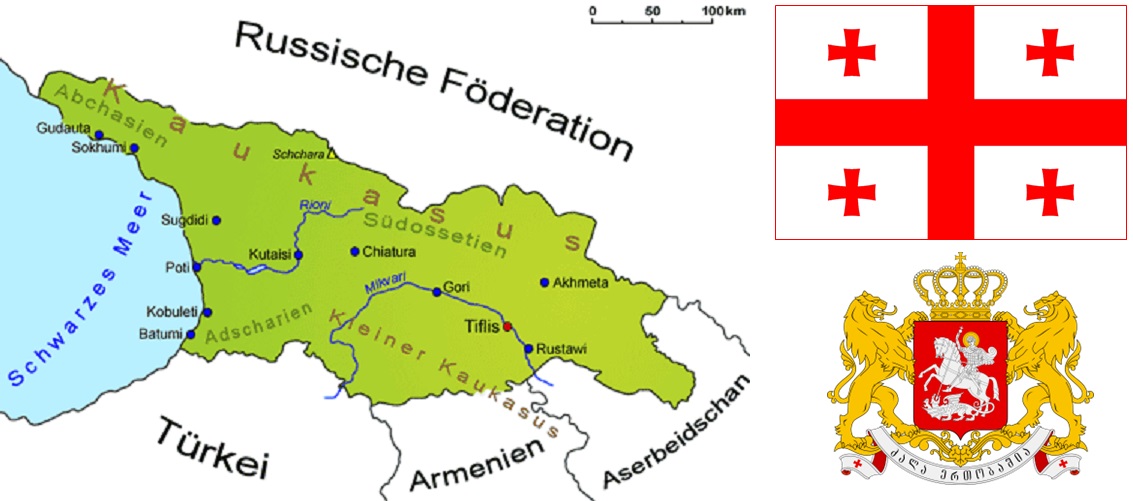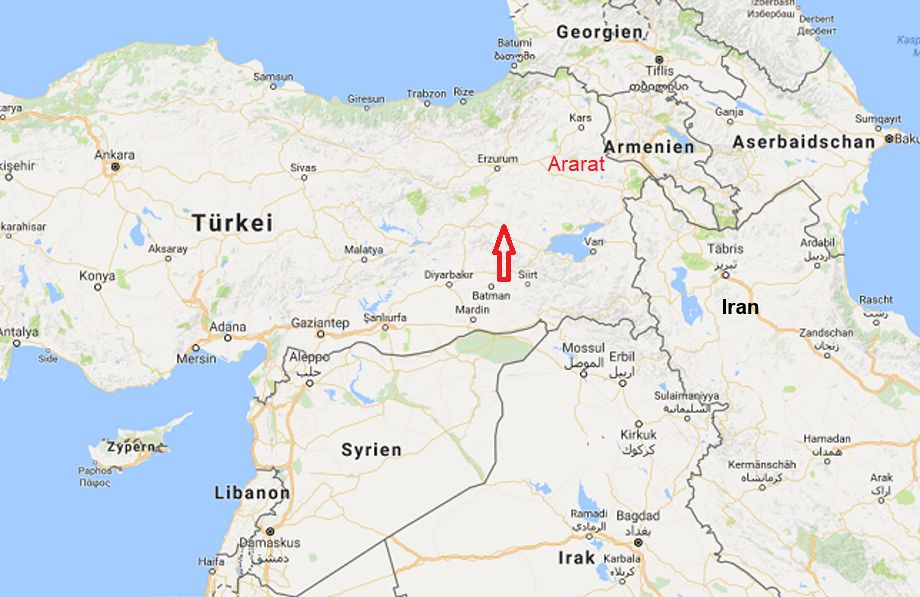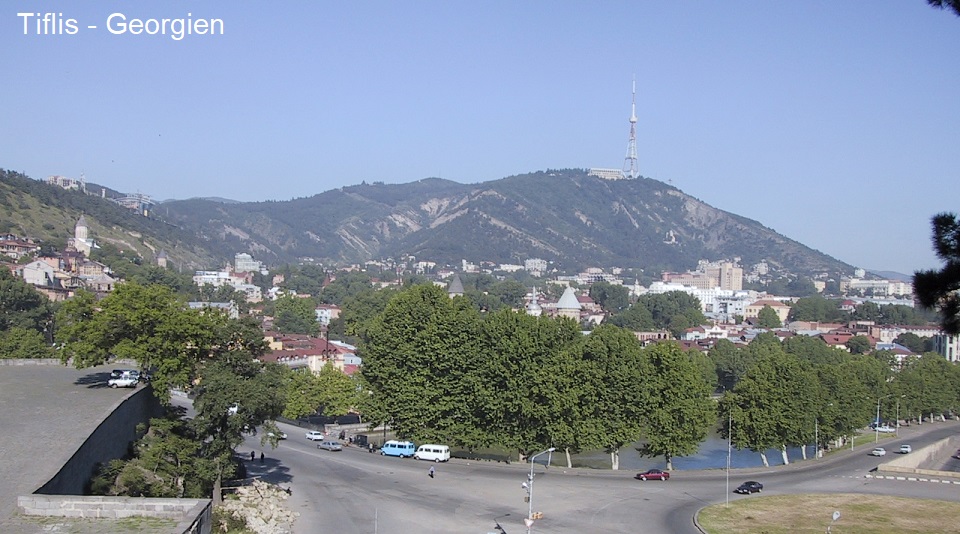Region (Georgian Kartli) in the centre of Georgia; see there.
Georgia
The state of Georgia (Georgian: Sakartvelo) in the Near East) with the capital Tbilisi covers 69,700 km² (including Abkhazia and South Ossetia) and 57,215 km² (excluding). The former USSR state became independent in 1991 after the collapse of the Soviet Union. It is located east of the Black Sea in the South Caucasus (see Transcaucasia). It is bordered by Russia to the north, Turkey and Armenia to the south and Azerbaijan to the east. The two parts of the country, Abkhazia and South Ossetia, are occupied by Russian forces and are not under the control of the Georgian government. They are only recognised as sovereign by Russia and a few other states.

History
Georgia is one of the oldest wine-growing countries and is also cited as the origin of the cultivated grapevine, which according to recent research is thought to have originated in south-east Anatolia (arrow). According to the Bible, Noah landed on Mount Ararat after the end of the Flood. The 5,000-year-old clay jars found near the city of Wani in Imeretia are said to have contained seeds of the Rkatsiteli grape. Grape seeds from cultivated vines that are already 7,000 years old point to the cultivation of better grape varieties.
Archaeology has provided evidence that viticulture was of great importance from the earliest times and was an integral part of Georgian culture. The museum in the capital Tbilisi houses a short piece of vine wood covered in silver, which was found in Trialeti in the south and has been dated to 3,000 BC. Numerous vine knives, stone candlesticks, mills, clay and metal vessels as well as jewellery in the form of grapes and vine leaves from the period between 3000 and 2000 BC were excavated in Mukheta, Trialeti and Pitsunda as well as in the Alazani Valley.

Rich ornaments with fruit-covered vines can be found on the walls of temples in the cities of Samtavisi, Ikalto, Gelati, Nikortsminda, Vardzia and Zarmza. A poem by the Greek scholar Apollonius of Rhodes (3rd century BC), the librarian of the famous library in Alexandria, states in his work "Argonautica" that the Argonauts (heroes of Greek mythology) saw climbing vines at the entrance to the royal palace and a fountain of wine in the shade of the trees when they arrived in the capital of Colchis. Georgian legends bear witness to the love of the vine. Georgia adopted Christianity in the fourth century. The first cross was allegedly made from vines to demonstrate the Christian religion and the vine as the country's most sacred assets. For many centuries, viticulture was of great economic importance in Georgia and finally reached an absolute peak in the Middle Ages.
Viticulture in modern times
After the Second World War (1939-1945), Georgia developed into an important wine supplier in the USSR, focussing on mass-produced wines. By 1985, the area under vines had increased to 125,000 hectares. Then the anti-alcohol campaign under Mikhail Gorbachev (*1931) caused a major setback, as 40,000 hectares of vineyards were cleared and replaced by melon cultivation. At the time of independence in 1991, 75% of production was exported to Russia. In 2006, however, there was a ban on imports (of Moldovan wines as well), which was justified by Russia on the grounds that Georgian wines were unfit for consumption due to contamination with pesticides and harmful substances. Georgia saw this as politically motivated action against the new pro-Western government. The Georgian wine industry was massively affected by this. The embargo was lifted at the end of 2011.

Regions & wine-growing areas
Under the wind-protecting influence of the towering Caucasus Mountains, there are ideal climatic conditions for viticulture in various forms. The wine-growing regions are characterised by diverse soil conditions and are spread throughout the country. The focus is on the east of the country. From a climatic point of view, there are 5 regions: Guria, Imeretia, Kakheti, Kartlia and...
Voices of our members

There is a vast number of sources on the web where one can acquire knowledge about wine. But none has the scope, timeliness and accuracy of the information in the encyclopaedia at wein.plus. I use it regularly and rely on it.
Sigi Hiss
freier Autor und Weinberater (Fine, Vinum u.a.), Bad Krozingen